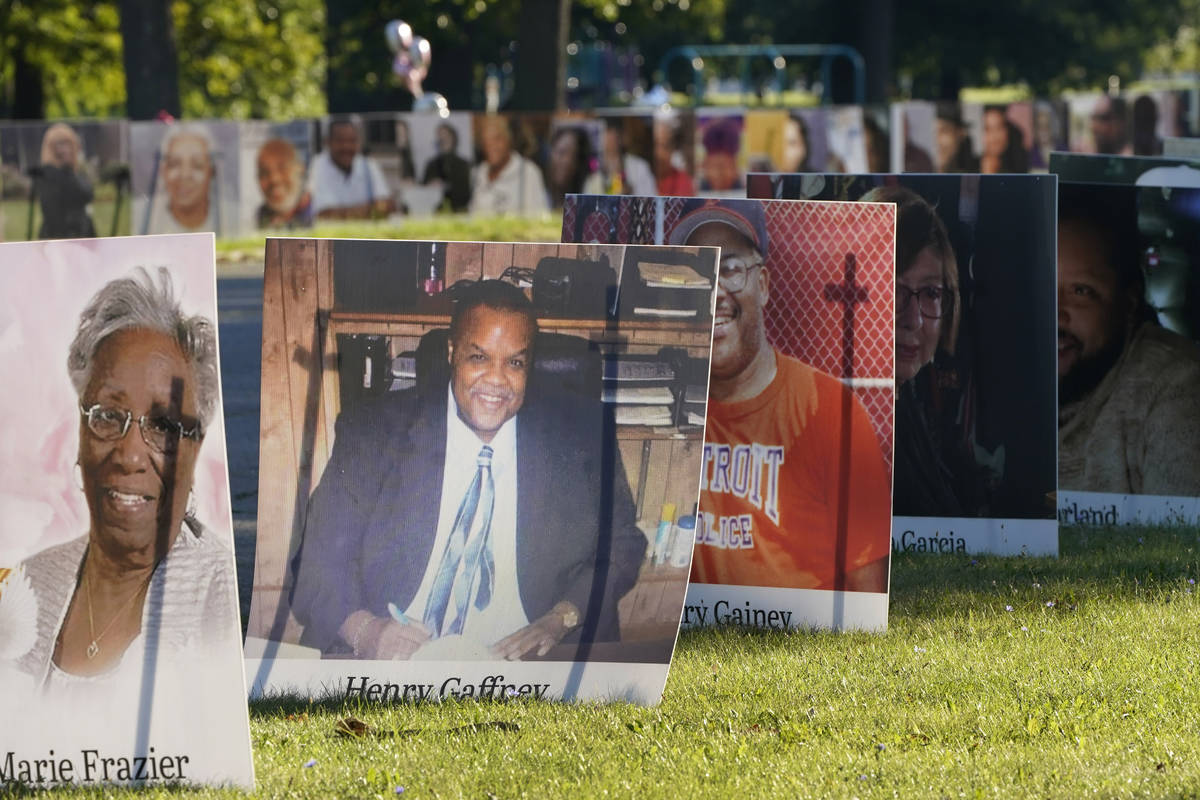Excess deaths prove COVID made for deadlier year in Nevada
Nevada saw more than 5,200 excess deaths between March 2020 and January, most attributed to COVID-19, new academic research shows.
The 50-state study, published in The Journal of the American Medical Association this month, found that some 2.8 million people died nationwide during that time. About 522,000 were considered excess deaths.
The study shows the pandemic had a “catastrophic effect on the health of the American public,” said lead author Dr. Steven Woolf, director emeritus at Virginia Commonwealth University’s Center on Society and Health.
The Centers for Disease Control and Prevention defines excess deaths as how many more deaths occur in a period than were anticipated. Every year, federal health officials forecast how many deaths they expect will occur each week, based on historical data.
Typically, the rate of excess deaths is no higher than 2 percent more than the previous year, Woolf said. In the 10-month span the study examined, a 23 percent increase was seen nationwide.
“That kind of increase in number of deaths is something this country hasn’t seen probably since World War II,” he said.
Nationwide, the excess death rate was higher among non-Hispanic Black people than it was non-Hispanic white or Hispanic populations, the study found.
[ Rare COVID ‘breakthrough cases’ being tracked in Nevada ]
About 68 percent of Nevada’s excess deaths had COVID-19 cited as an underlying or contributing cause, according to the CDC data cited in the study.
Woolf said the true share is likely higher and was artificially lowered by the respiratory disease not being listed on some people’s death certificates.
UNLV epidemiologist Brian Labus said he agreed with Woolf’s assessment. Nevada’s greatest amount of excess deaths occurred during the state’s most severe COVID-19 wave over the winter.
“This is a serious disease,” Labus said. “More serious than flu, more serious than people wanted to believe it was, and clearly it killed a lot of Nevadans.”
Nevada health officials consider a COVID-19 death to be anyone who dies from natural causes within 30 days of testing positive for the respiratory disease. The person’s death certificate is not required to specifically list a COVID-19-related term as an underlying cause of death.
Using its definition, the state has recorded more than 5,300 COVID-19 deaths since the start of the pandemic.
Other excess deaths were likely tied to the pandemic, Woolf said.
Some people may have delayed seeking emergency medical treatment due to fears of catching COVID-19 at a hospital, he said. Others may not have managed chronic illnesses, such as diabetes or HIV, during stretches where doctors’ offices were closed or if they lost a job and could no longer afford medication. Still others may have suffered drug overdoses or killed themselves, he said.
“It’s likely that the pandemic will cost lives that where the people will not lose their life for another one, two or three years,” he said. “An example would be a woman who put off her mammogram during the pandemic and discovers an advanced breast mass.”
Nevada did not fare worst in the West. Arizona and New Mexico were both among the 10 states with the highest per capita rate of excess deaths, according to the study.
Contact Michael Scott Davidson at sdavidson@reviewjournal.com or 702-477-3861. Follow @davidsonlvrj on Twitter.











































